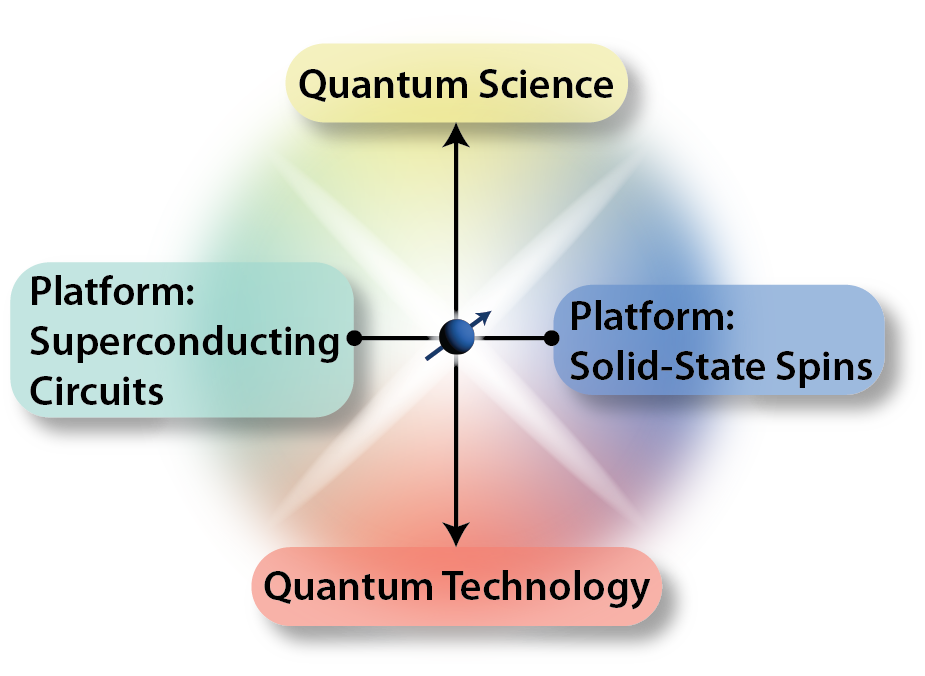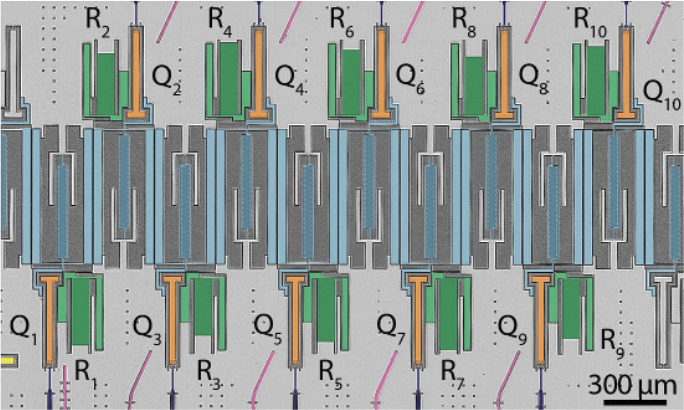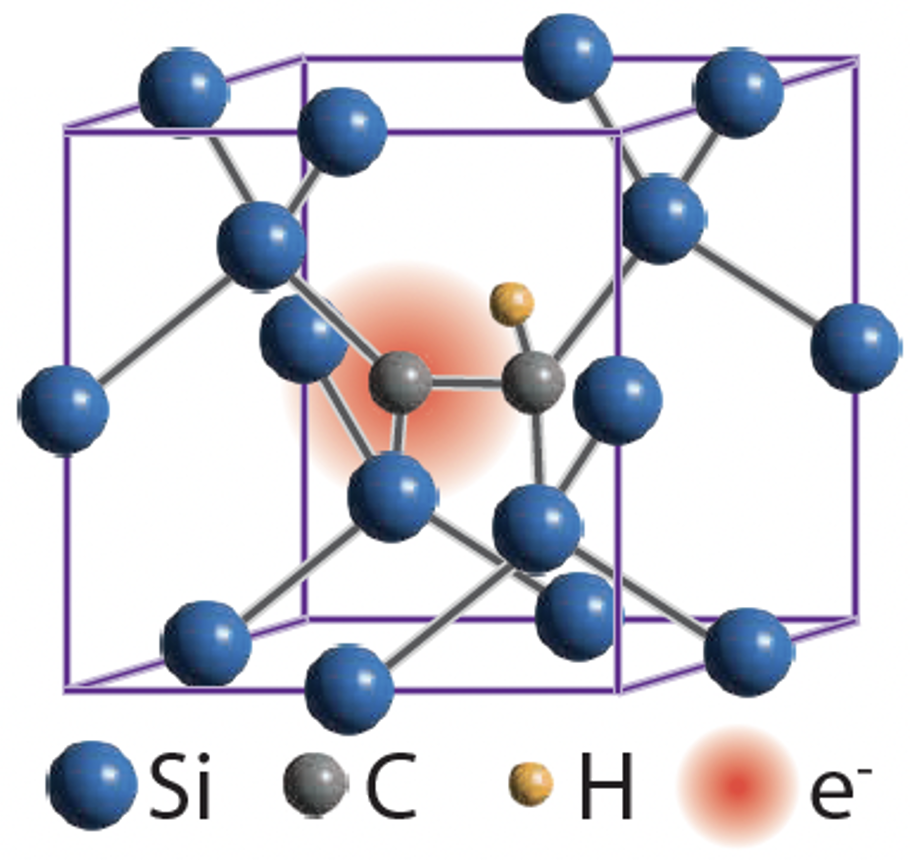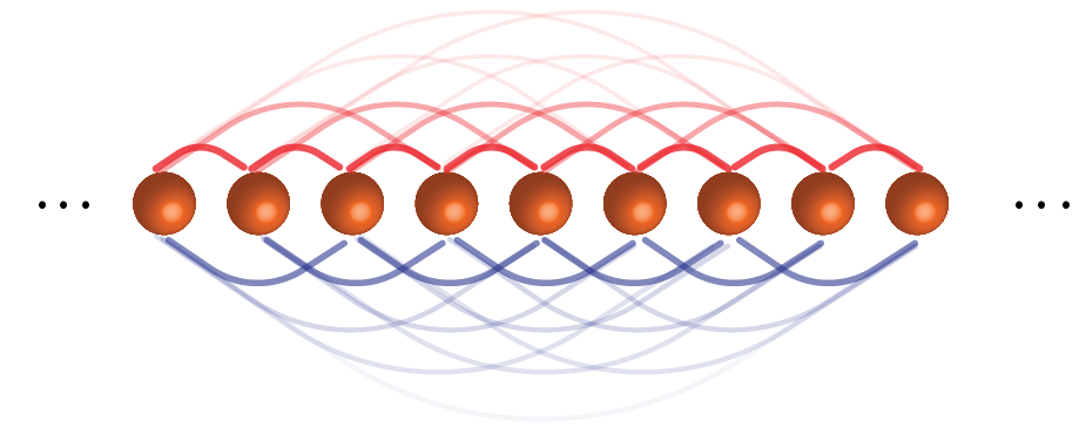Research
Using platforms based on superconducting circuits and solid-state spins, our group harnesses the unique advantages of qubit-photon interactions to push the boundaries of quantum science and technology.
Our research is centered around these key questions:
- How can innovative developments in devices, architectures, and control propel our platforms forward?
- How can we explore novel possibilities in both basic science and technological applications using these platforms?


Superconducting qubits are a leading platform for quantum computing, known for their ease of individual control and precise readout. By coupling these qubits with engineered microwave photonic structures, such as waveguides and metamaterials, we introduce non-local degrees of freedom and innovative connectivity architectures in quantum circuits.
Relevant Publications:
Gihwan Kim, Andreas Butler, Vinicius S Ferreira, Xueyue Zhang, Alex Hadley, Eunjong Kim, Oskar Painter, "Fast Unconditional Reset and Leakage Reduction of a Tunable Superconducting Qubit via an Engineered Dissipative Bath" arXiv preprint arXiv:2411.02950
Xueyue Zhang*, Eunjong Kim*, Daniel K Mark, Soonwon Choi, Oskar Painter, "A superconducting quantum simulator based on a photonic-bandgap metamaterial" Science 6629, 278-283 2023
Eunjong Kim*, Xueyue Zhang*, Vinicius S Ferreira, Jash Banker, Joseph K Iverson, Alp Sipahigil, Miguel Bello, Alejandro González-Tudela, Mohammad Mirhosseini, Oskar Painter, "Quantum electrodynamics in a topological waveguide" Physical Review X 1, 011015 2021
Mohammad Mirhosseini*, Eunjong Kim*, Xueyue Zhang, Alp Sipahigil, Paul B Dieterle, Andrew J Keller, Ana Asenjo-Garcia, Darrick E Chang, Oskar Painter, "Cavity quantum electrodynamics with atom-like mirrors" Nature 7758, 692-697 2019

Silicon has been the backbone of the semiconductor industry in both electronics and photonics. However, its potential in quantum networking and communication has been limited by the lack of an efficient spin-photon interface. Our research explores the potential of emerging candidates, such as silicon color centers, by studying their fundamental properties and investigating unique schemes enabled by silicon.
Relevant Publications:
Hanbin Song, Xueyue Zhang, Lukasz Komza, Niccolo Fiaschi, Yihuang Xiong, Yiyang Zhi, Scott Dhuey, Adam Schwartzberg, Thomas Schenkel, Geoffroy Hautier, Zi-Huai Zhang, Alp Sipahigil, "Entanglement of a nuclear spin qubit register in silicon photonics" Nature Nanotechnology (2025): 1-5.
Xueyue Zhang, Niccolo Fiaschi, Lukasz Komza, Hanbin Song, Thomas Schenkel, Alp Sipahigil, "Laser-induced spectral diffusion of T centers in silicon nanophotonic devices" PRX Quantum 6, 030351 (2025)
Lukasz Komza, Xueyue Zhang, Hanbin Song, Yu-Lung Tang, Xin Wei, Alp Sipahigil, "Multiplexed color centers in a silicon photonic cavity array" Optica 12, 1400-1405 (2025)
Hanbin Song, Xueyue Zhang, Yiyang Zhi, Lukasz Komza, Alp Sipahigil, "Integrated Platform for Spin-Photon Interfaces in Silicon" CLEO, 2024
Lukasz Komza, Xueyue Zhang, Yu-Lung Tang, Hanbin Song, Alp Sipahigil, "Frequency multiplexed emission from cavity-enhanced T centers" CLEO, 2024
Yihuang Xiong, Jiongzhi Zheng, Shay McBride, Xueyue Zhang, Sinéad M Griffin, Geoffroy Hautier, "Computationally Driven Discovery of T Center-like Quantum Defects in Silicon" Journal of the American Chemical Society 146.44 2024
Yu-Lung Tang, Lukasz Komza, Zihuai Zhang, Xueyue Zhang, Alp Sipahigil, "Reconfigurable photonic crystal cavity arrays for multiplexed spin-photon interfaces in silicon" Bulletin of the American Physical Society, 2024

Mainstream superconducting qubit architectures typically feature nearest-neighbor connectivity through fixed or tunable couplers. By employing novel architectures based on waveguide QED, we explore longer-range or tunable range interactions between qubits. These advancements are crucial for quantum error correction, variational quantum algorithms, and quantum simulation.
Relevant Publications:
Xueyue Zhang*, Eunjong Kim*, Daniel K Mark, Soonwon Choi, Oskar Painter, "A superconducting quantum simulator based on a photonic-bandgap metamaterial" Science 6629, 278-283 2023
Mohammad Mirhosseini*, Eunjong Kim*, Xueyue Zhang, Alp Sipahigil, Paul B Dieterle, Andrew J Keller, Ana Asenjo-Garcia, Darrick E Chang, Oskar Painter, "Cavity quantum electrodynamics with atom-like mirrors" Nature 7758, 692-697 2019

Simulating strongly interacting quantum many-body systems, a formidable task for classical computers, provides valuable insights into condensed matter physics, material science, and quantum chemistry. By adopting a bottom-up approach to synthesizing quantum materials, such as the Bose-Hubbard model, we incorporate tunable-range coupling between quantum particles. This allows us to explore various regimes and gain deeper understanding.
Relevant Publications:
Xueyue Zhang*, Eunjong Kim*, Daniel K Mark, Soonwon Choi, Oskar Painter, "A superconducting quantum simulator based on a photonic-bandgap metamaterial" Science 6629, 278-283 2023

Topological photonics introduces intrinsic robustness protected by topological invariants. By leveraging the flexible engineering capabilities of microwave metamaterials, we explore how the topological properties of the photon bath influence quantum emitters and their photon-mediated interactions.
Relevant Publications:
Eunjong Kim*, Xueyue Zhang*, Vinicius S Ferreira, Jash Banker, Joseph K Iverson, Alp Sipahigil, Miguel Bello, Alejandro González-Tudela, Mohammad Mirhosseini, Oskar Painter, "Quantum electrodynamics in a topological waveguide" Physical Review X 1, 011015 2021

Distributing quantum entanglement over long distances is essential for utilizing nonlocal resources in communication and metrology. We develop spin-photon interfaces in silicon, such as T centers—a carbon-hydrogen defect—that could potentially offer a scalable and manufacturable solution. In this approach, the electron or nuclear spin acts as long-lived stationary qubits or quantum memories, while the telecom-band flying photon establishes a low-loss link between distant nodes.
Relevant Publications:
Lukasz Komza, Xueyue Zhang, Hanbin Song, Yu-Lung Tang, Xin Wei, Alp Sipahigil, "Multiplexed color centers in a silicon photonic cavity array" Optica 12, 1400-1405 (2025)
Hanbin Song, Xueyue Zhang, Yiyang Zhi, Lukasz Komza, Alp Sipahigil, "Integrated Platform for Spin-Photon Interfaces in Silicon" CLEO, 2024
Lukasz Komza, Xueyue Zhang, Yu-Lung Tang, Hanbin Song, Alp Sipahigil, "Frequency multiplexed emission from cavity-enhanced T centers" CLEO, 2024
Yu-Lung Tang, Lukasz Komza, Zihuai Zhang, Xueyue Zhang, Alp Sipahigil, "Reconfigurable photonic crystal cavity arrays for multiplexed spin-photon interfaces in silicon" Bulletin of the American Physical Society, 2024